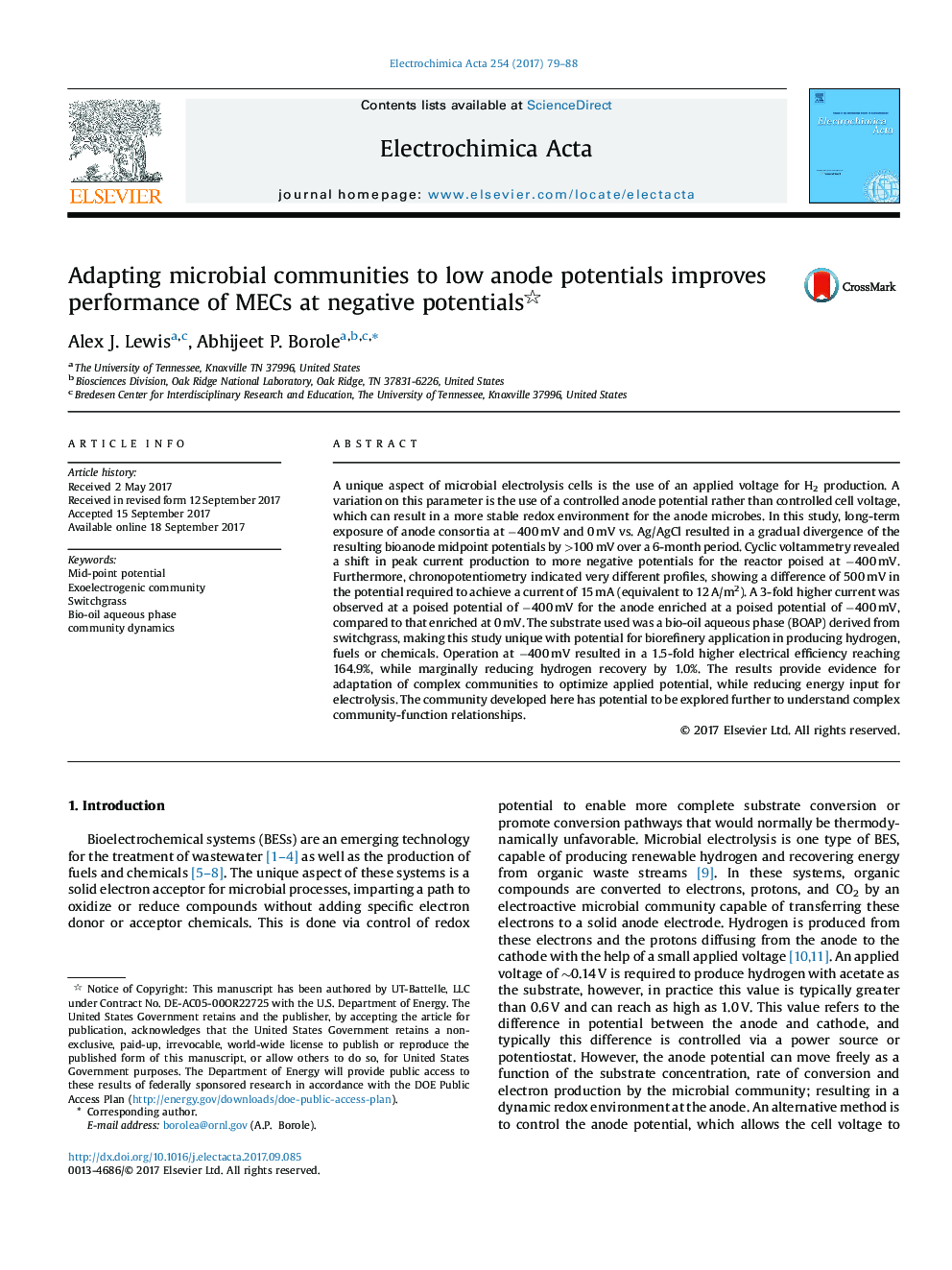| کد مقاله | کد نشریه | سال انتشار | مقاله انگلیسی | نسخه تمام متن |
|---|---|---|---|---|
| 6469785 | 1424103 | 2017 | 10 صفحه PDF | دانلود رایگان |

- Developed communities at 0Â mV and â400Â mV vs. Ag/AgCl for converting biomass-derived liquids.
- Electroactive community at â400Â mV achieved a maximum current density of 12Â A/m2.
- Lower set anode potential resulted in a 1.5-fold higher electrical efficiency.
- A maximum hydrogen productivity of 10.9 L-H2/L-anode-day was obtained.
A unique aspect of microbial electrolysis cells is the use of an applied voltage for H2 production. A variation on this parameter is the use of a controlled anode potential rather than controlled cell voltage, which can result in a more stable redox environment for the anode microbes. In this study, long-term exposure of anode consortia at â400Â mV and 0Â mV vs. Ag/AgCl resulted in a gradual divergence of the resulting bioanode midpoint potentials by >100Â mV over a 6-month period. Cyclic voltammetry revealed a shift in peak current production to more negative potentials for the reactor poised at â400Â mV. Furthermore, chronopotentiometry indicated very different profiles, showing a difference of 500Â mV in the potential required to achieve a current of 15Â mA (equivalent to 12Â A/m2). A 3-fold higher current was observed at a poised potential of â400Â mV for the anode enriched at a poised potential of â400Â mV, compared to that enriched at 0Â mV. The substrate used was a bio-oil aqueous phase (BOAP) derived from switchgrass, making this study unique with potential for biorefinery application in producing hydrogen, fuels or chemicals. Operation at â400Â mV resulted in a 1.5-fold higher electrical efficiency reaching 164.9%, while marginally reducing hydrogen recovery by 1.0%. The results provide evidence for adaptation of complex communities to optimize applied potential, while reducing energy input for electrolysis. The community developed here has potential to be explored further to understand complex community-function relationships.
140
Journal: Electrochimica Acta - Volume 254, 10 November 2017, Pages 79-88